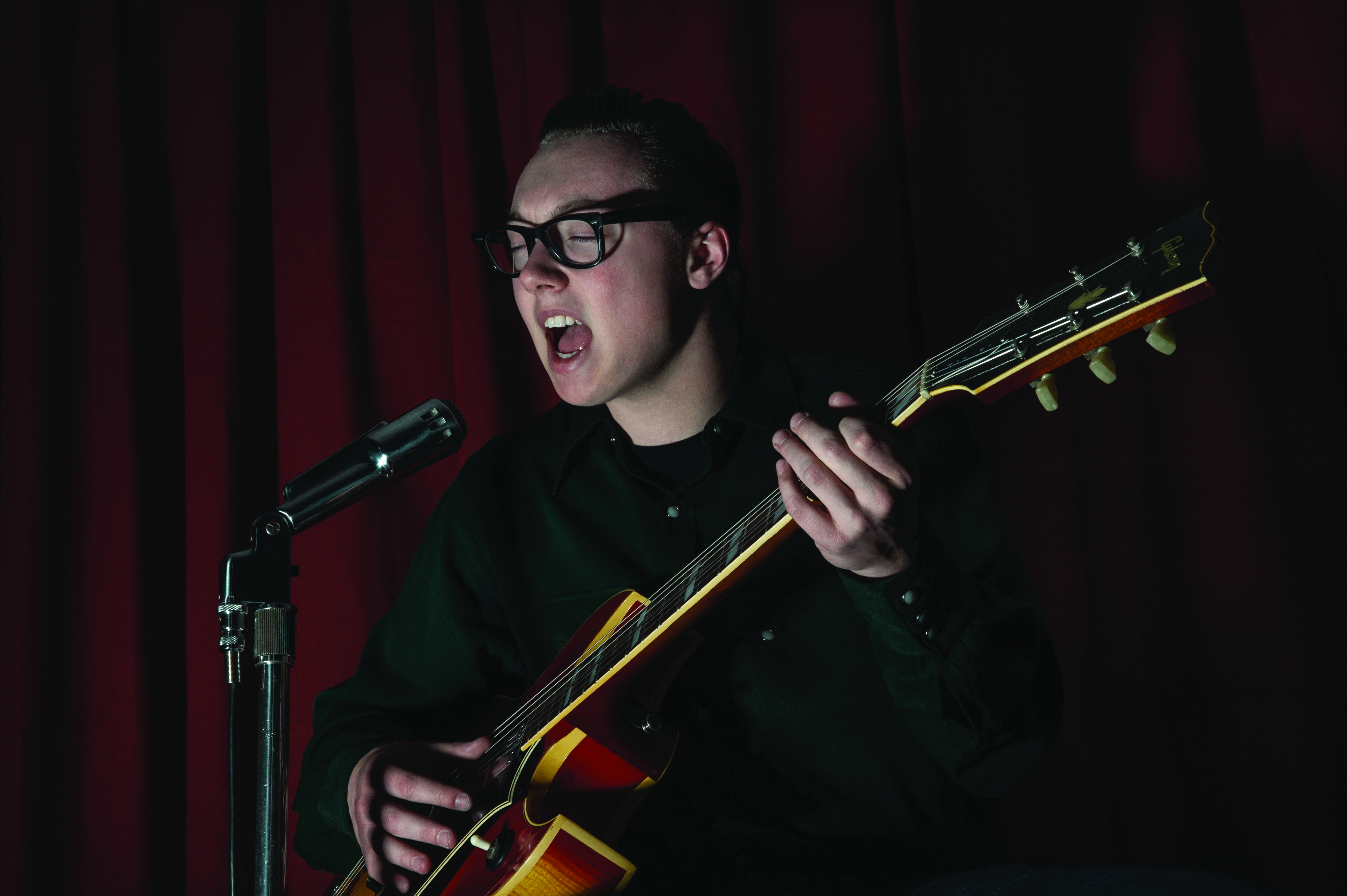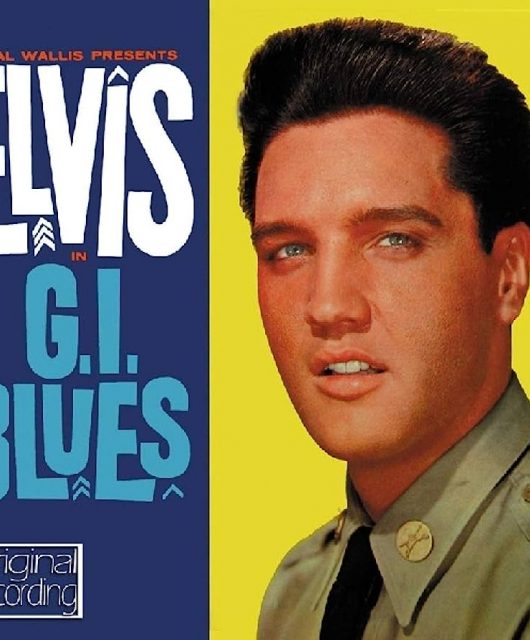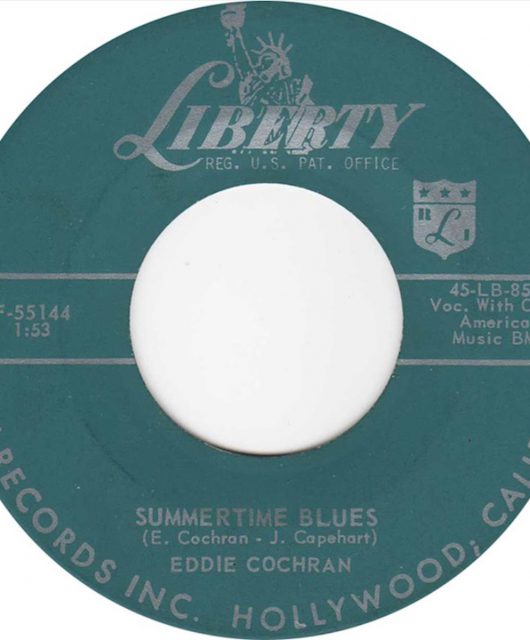The Rock And Roll Hall Of Fame has been paying tribute to the most important names in music since 1986. We look back on those earliest days when the first wave of early rockin’ trailblazers were honoured…
The Rock And Roll Hall Of Fame. If you’re a long-time reader of this magazine or website, then you’ll have seen countless references to it within these pages.
Rarely does an issue of Vintage Rock go to press without some mention of the music industry’s most star-studded night of the year. A fair chunk of the artists we cover are members and it’s considered the greatest badge of honour in the world of rock’n’roll.
Of course, most of those original pioneers have already been inducted. Artists automatically become eligible 25 years
after the release of their first record, and many of the nominees for 2023’s RRHOF ceremony are children of the 60s and 70s, born well after rock’n’roll’s first wave exploded onto the scene.
Fresh Youthquake
In the 50s, rock’n’roll was, of course, seen as defiantly anti-establishment. Mainstream record labels, radio stations and TV shows would eventually come to embrace this fresh youthquake, but it was always an uneasy hook-up. You only have to look at any Ed Sullivan interview with Elvis Presley or Little Richard or a Dick Clark-fronted episode of American Bandstand to see how ill-at-ease the suits were dealing with these raw, rebellious upstarts.
Neither Ed Sullivan nor Elvis could, we imagine, have foreseen an organisation like the Rock And Roll Hall
Of Fame. Rock’n’roll was meant to be ephemeral, wasn’t it? Elvis never expected to have a 20-year career, and Sullivan probably thought he’d be back to booking crooners and country singers once the craze calmed down. It wasn’t meant to be lionised in a museum and its leading artists inducted into something called a Hall Of Fame, like this music actually mattered.
But then maybe rock’n’roll needed a quarter of a century behind it to prove its staying power. Now that first blast of rock’n’roll is in the rear view mirror, it does need contextualising and, yes, celebrating. It’s officially part of America’s, and the world’s, heritage now and this is why the Rock And Roll Hall Of Fame – not just the annual ceremony itself – but the actual bricks and mortar museum in Cleveland, Ohio, is so damned important. It’s part of
the American story.
Inaugural Event
On 23 January 1986 to be exact, that the inaugural Hall Of Fame ceremony took place. Like most of the awards since, that first event was held in the Grand Ballroom of New York City’s Waldorf Astoria Hotel on Park Avenue, and if we could take a time machine back to anywhere in the last four decades, we’d definitely set the dial for that day, if only to clock our eyes on – and listen to – some of the greatest names in rock’n’roll jamming on stage together.
Fittingly, the first ever person called up was the ‘Father of Rock’n’Roll’ himself, Chuck Berry. Admittedly, that opening set of artists were inducted in alphabetical order, but it seemed only right putting Chuck ahead of James Brown, Ray Charles, Sam Cooke, Fats Domino, The Everly Brothers, Buddy Holly, Jerry Lee Lewis, Little Richard and Elvis Presley.
However, not all of the (living) inductees were in attendance on that historic night. Little Richard was unable to attend as he was recovering from a car accident, so his award was accepted on his behalf from presenter Roberta Flack by his brother-in-law, Marvin Blackmon.
Celebration Of Talent
The format was as it would be today. Each inductee is introduced by a fellow musician, usually one whose own work has been influenced by that artist. In 1986, it was Keith Richards who presented Chuck Berry with his gong, followed by Steve Winwood for James Brown, Quincy Jones for Ray Charles, Herb Alpert for Sam Cooke and Billy Joel for Fats Domino.
Elsewhere, Neil Young said his piece for the Everlys, and there were additional inductions by John Fogerty for Buddy Holly, Hank Williams Jr for Jerry Lee Lewis and Sean and Julian Lennon for Elvis Presley (accepted by Elvis’ daughter, Lisa Marie). “It’s very difficult for me to talk about Chuck Berry,” stated a clearly star-struck Keith Richards, “because I lifted every lick he ever played.” Berry then duckwalked onto the stage to the strains of Johnny B. Goode to give the Stones guitarist a warm embrace.
For his part, James Brown thanked the Hall Of Fame, saying: “I see so many of my friends, it’s almost like the beginning of your whole life, we are all in the same family, brothers and sisters. No cousins, all brothers and sisters out there. I just want to say thank you and thank God for the fact we are all together. I see all our friends around the world, I’ve only got great things to say about them, and this is a great time in my life, so I want you all to keep holding whatever you’re holding for me.”
All-Star Jam
That night closed with the first of the Hall Of Fame’s all-star jams, featuring all the living inductees, plus many of the presenters, burning through a setlist that included Berry’s Roll Over Beethoven, Little Queenie and Johnny B. Goode and Jerry Lee’s Great Balls Of Fire and Whole Lotta Shakin’ Going On.
But it wasn’t just first-wave performers who were celebrated that night. Since 1986, the Hall Of Fame has also awarded non-musicians as well as those who helped lay the groundwork for rock’n’roll. Inducted in specialty categories in ’86 were DJ (and the man widely thought to have coined the term ‘rock’n’roll’) Alan Freed, Columbia Records’ John Hammond and Sun Records head Sam Phillips.
Though it was chiefly the titans of rock’n’roll that were recognised that first year, many of the genre’s less-eminent names have had their moment of glory. And it’s not just strict rock’n’rollers either, but artists from many of the off-branches of rock’n’roll, such as doo-wop, rockabilly, R&B, blues and country.
Moment Of Glory
That next year, The Coasters, Marvin Gaye, BB King and Clyde McPhatter found themselves awarded, alongside more traditional rock’n’roll names such as Eddie Cochran, Bo Diddley and Carl Perkins.
But how do artists find themselves on the nomination papers? To be considered, a committee of music historians select names for the ‘Performers’ category which are then voted on by around 1,000 experts – including producers, journalists and academics – from all corners of the globe.
There have been controversies. Despite Bill Haley being inducted in 1987, it wasn’t until 2012 that the rest of the Comets were honoured. In that same year, the RRHOF committee voted to award a myriad of groups whose singers had previously been inducted on their own, including The Crickets (Buddy Holly, 1986), The Famous Flames (James Brown, also 1986), The Miracles (Smokey Robinson, 1987), The Midnighters (Hank Ballard, 1990) and The Blue Caps (Gene Vincent, 1998).
Badge of Honour
“There was a lot of discussion about this,” Terry Stewart, a member of the nominating committee, told Cleveland.com at the time. “There had always been conversations about why the groups weren’t included when the lead singers were inducted. Very honestly, nobody could really answer that question… We decided we’d sit down as an organisation and look at that. This is the result.”
Questions have also been raised as regards bias from the RRHOF. It’s not been helped by the almost CIA-like secrecy surrounding the nomination process, something Jon Landau, head of the nominating committee, seemed unbothered by when he spoke to The New York Times: “We’ve done a good job of keeping the proceedings nontransparent,” he told them. “It all dies in the room.”
When an artist is inducted, sales of their back catalogue can leap 40 to 60% (so says David Bakula, a senior vice-president at Nielsen SoundScan), so it’s no surprise that a fair bit of backstage lobbying goes on. And why a performer is chosen in any particular year is a mystery to many.
Boost In Sales
The Bee Gees, for instance, were passed over 11 times before being inducted in 1997. And it took until 2009 for the ‘Queen of Rockabilly’, Wanda Jackson, to finally be garlanded. The honour gave a turbo-charged boost to the septuagenarian’s career, sending her into Jack White’s orbit for the album, The Party Ain’t Over, to opening for Adele’s 2011 tour. “What can I say, but wow, I’m really here!” Jackson said on the night.
Wanda isn’t the only big-leaguer to have been kept waiting. Sister Rosetta Tharpe, often dubbed the ‘Godmother of Rock’n’Roll’, wasn’t inducted until 2018. Darlene Love, whose first single He’s A Rebel came out in 1962, was finally inducted in 2011. The O’Jays, formed in 1958, weren’t honoured until 2005. The Righteous Brothers got their award 40 years after their formation. Richie Valens received his 42 years after his death.
Remembering The Pioneers
Some have accused the Hall Of Fame for prioritising marquee names over artists that are, in many people’s eyes, more influential, even if they aren’t big hitters commercially.
A former member of the nominations board commented to Fox News in 2015 that: “At one point [committee member] Suzan Evans lamented the choices being made because there weren’t enough big names that would sell tickets to the dinner. That was quickly remedied by dropping one of the doo-wop groups being considered in favour of a ‘name’ artist… I saw how certain pioneering artists of the 50s and early 60s were shunned because there needed to be more name power on the list, resulting in 70s superstars getting in before the people who made it possible for them. Some of those pioneers still aren’t in today.”
There remain artists, beloved by the rock’n’roll community, that have never been honoured – Dorsey and Johnny Burnette, Charlie Feathers, The Collins Kids.
Shining A Spotlight
Then there’s the US bias… There are so many names, incredibly cherished in Britain, that have never troubled the Hall Of Fame – Billy Fury, Cliff Richard, The Shadows, Lonnie Donegan, Tommy Steele, Johnny Kidd & The Pirates, Joe Meek… Even Canada, so close geographically to the Hall Of Fame’s base in Cleveland only have six acts in there.
For all its faults, though, the Rock And Roll Hall Of Fame has done God’s work in shining a spotlight on some of the genre’s most vital names. While some artists – Elvis Presley, The Beatles, the Stones – hardly needed the sales boost of a Hall Of Fame nod, other artists have seen their records rocket in popularity.
And for those that died way before their time – see Clyde McPhatter, Richie Valens, Buddy Holly, Eddie Cochran, Gene Vincent et al – it’s been incredibly touching to see artists such as Ben E King, John Fogerty and Mick Jones pay heartfelt tribute.
Rock The Vote
But don’t go thinking that the modern-day Rock And Roll Hall Of Fame is only about honouring Generation X artists. There are still singers and bands that have been inexplicably passed over. It was only in 2021 that Tina Turner was called up. In 2022 Dolly Parton, then 76 years old, was inducted alongside Eminem, 27 years her junior. There’s still time, then, to correct some of those shameful oversights.
These days, the Hall Of Fame allows for what they call a ‘Fan Vote’ where ordinary folk can vote online or at the RRHOF’s museum in Cleveland, the top five results of which comprise a fans’ ballot to determine that year’s inductees.
That means, if enough of us vote, there’s a chance we can get The Rock’n’Roll Trio, Warren Smith or Arthur ‘Big Boy’ Crudup on the ballot for 2024. Thirty-eight years after that very first event, the Rock And Roll Hall Of Fame still has unfinished business with the 50s.
For more on the Rock And Roll Hall Of Fame click here
Read More: The Vintage Rock Top 101 Rockabilly Tracks






